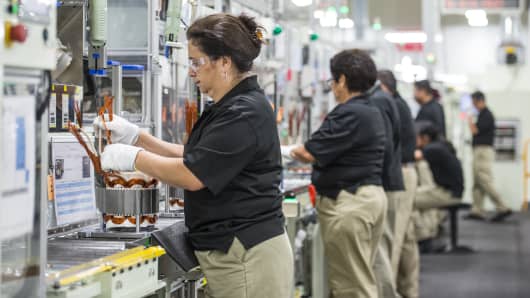The pace of U.S. job creation has been slowing, which is making it harder for people looking for a job.
But it's good news if you already have one. Why? It may be time to ask your boss for a raise.
With more than half a million unfilled jobs, and potential job candidates in a better bargaining positions, wages have begun to move higher. especially for workers in industries with the highest rate of unfilled jobs. The pace of wage growth has picked up as the gap between job openings and new hires has widened.



